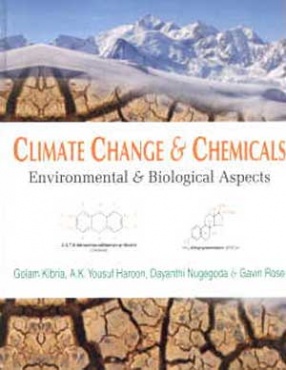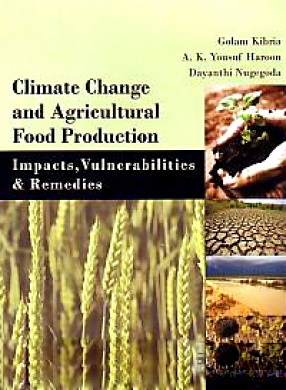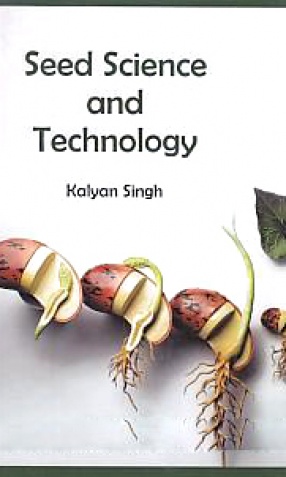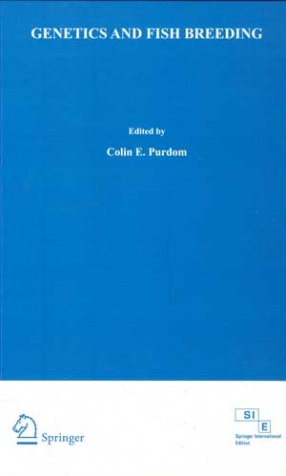Our climate is changing. these changes are due to two main reasons. The first and foremost is due to emissions of green house gases (GHGs) to atmosphere. The principal GHGs are carbon dioxide, methane and nitrous oxide. Human activities such as burning of fossil fuels, and agricultural activities (growing rice, application of nitrogen fertilisers, livestock rearing) have increased the amount of GHGs in the atmosphere in recent times. The enhanced greenhouse effect (an increase in the concentrations of GHGs) has resulted in a change in weather and climate of our planet. Some of these effects are rising of surface and ocean temperatures, rising of sea levels, widespread melting of glaciers and snows, rising of atmospheric CO2 concentrations and extreme weather events (intense drought, intense precipitation, heat waves). The likely negative impacts of climate change or CHG effects are acidification of oceans, changes in river hydrology, changes in abundance and distribution of biodiversity, coral bleaching, increased incidence of pests and diseases (malaria, dengue), harmful algal blooms and increase in the toxicity of common harmful pollutants and more heat waves, etc. Despite several negative impacts, there are a few beneficial aspects of enhanced GHGs effects, for example, higher atmospheric concentrations of CO2 (or carbon dioxide fertilisation) may enhance the productivity of seagrasses, mangroves and crop production including rice, wheat, soybeans (so called C3 crops). Higher temperatures may accelerate the growth of temperate fish. Part 1 of the book (chapter 1-5) provides an introduction to GHGs and its relationships with climate change and likely impacts of climate change on freshwater resources, agriculture and livestock, fisheries and aquatic ecosystems and human health.
Secondly, human activities resulting from agricultural, industrial and mining activities release chemicals and change our environment through contamination of air, land and water. Pesticides used to control pest plants and animals may enter into the environment via spray drift or drainage-discharge or run-off. Water contaminated with pesticides could be unfit for human consumption, stock, drinking, irrigation, food processing and fish farming. Arsenic is released into the environment as natural or industrial processes. Arsenic contamination of groundwater has been reported from 20 countries including Bangladesh, India (West Bengal), where drinking water as well as vegetables and rice have been contaminated. Heavy metals' pollution can harm aquatic organisms through lethal and sub-lethal effects and can reduce or eliminate species from an ecosystem through increased disease or mortality or decreased fecundity. During combustion processes (power generation, bush fire) dioxins are released into the environment. Dioxins are some of the most toxic chemicals so far known to science and have the risk of cancer in adult humans. Sewage effluents can contain endocrine disrupting chemicals (EDCs) such as Estrogens EE2, and E2 which are likely to cause greatest risk to environment and wildlife at a dose as low as 0.1-1.0 ng/I. Furthermore, other EDCs–nonylphenol (NP) has been detected in human blood, breast milk, urine and adipose tissue and in seafood confirming persistent and bio-accumulative nature of NP. Exposures to high levels of other EDCs – phthalates have reported to cause miscarriages and pregnancy complications in women and are the leading cause of reproductive disorders in humans including reduced sperm counts, histological changes in testes, and reduced fertility. Pharmaceuticals (human and veterinary medicines) have been detected worldwide in surface waters including drinking water. The decline in vulture population in Bangladesh, India and Pakistan is reported to be associated with renal failure related to the accumulation of pharmaceutical diclofenac used in livestock industry. Biotoxins are naturally occurring highly toxic compounds produced by freshwater cyanobacteria and marine algae (reported from all over the world), these toxins can kill a wide range of organisms including birds, cattle, chicken, ducks, fish and human. Arsenic, heavy metals, pesticides, dioxins, EDCs, human and veterinary drugs and biotoxins are harmful chemicals, which are persistent, bio-accumulative as well as toxic. Most of these chemicals can be transferred to human via food chains or drinking water and could be of health hazard, if consumed. Part 2 of the book (chapter 6-13) highlights the physico-chemical properties, potential sources, national and international guidelines, world and regional reviews and the impacts of these harmful chemicals on wildlife, environment and human health.
The book 'Climate Change and Chemicals : Environmental and Biological Aspects' reviewed and summarised research results and information from both developed and developing countries including Asia-Pacific, Australasia and other parts of the world. It was intended to document complex and technical information in most simplified manner by providing more illustrations in the form of tables and figures. The book would be a useful resource for academic and research institutes, health professionals, environmental scientists, chemists, chemical engineers, water engineers/scientists, fisheries biologists, agriculturists, ecotoxicologists and government planners and regulators. To benefit a wide range of readers the book has been written in simple and plain English, with appropriate acronyms and glossary and the key facts or summary given at the beginning of each chapter.







There are no reviews yet.